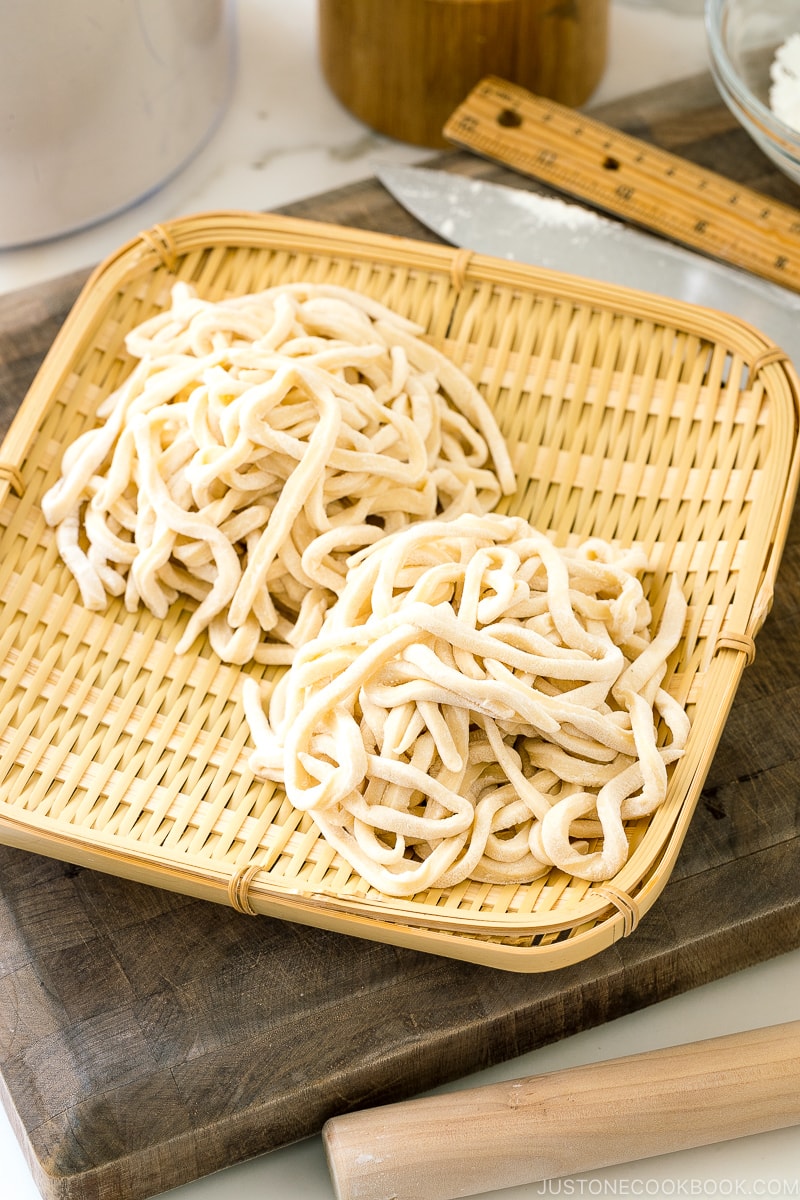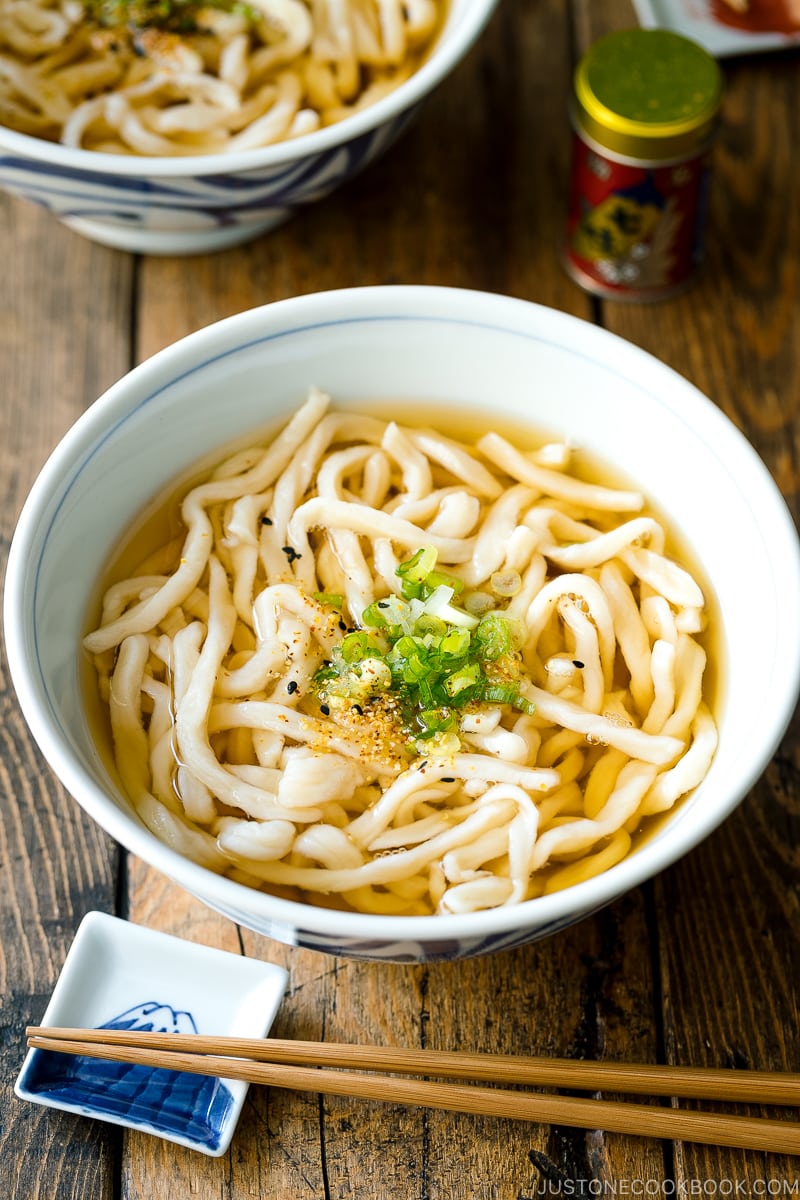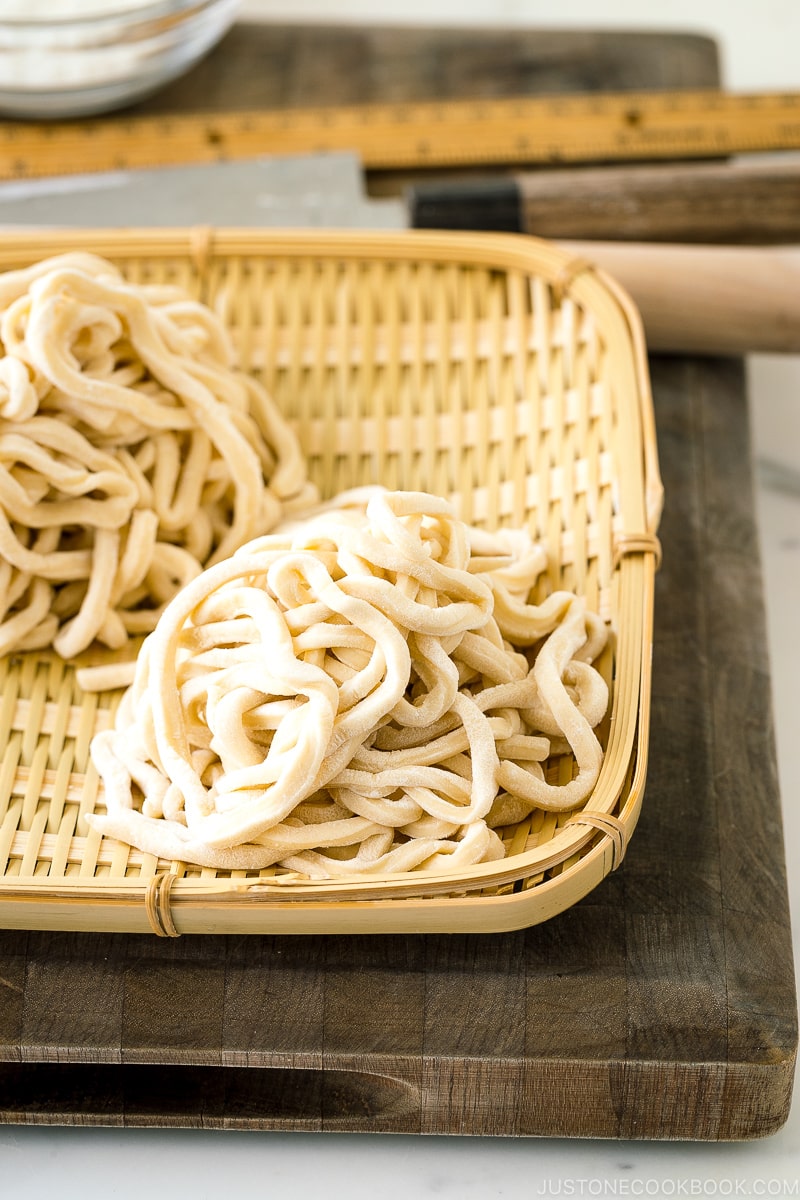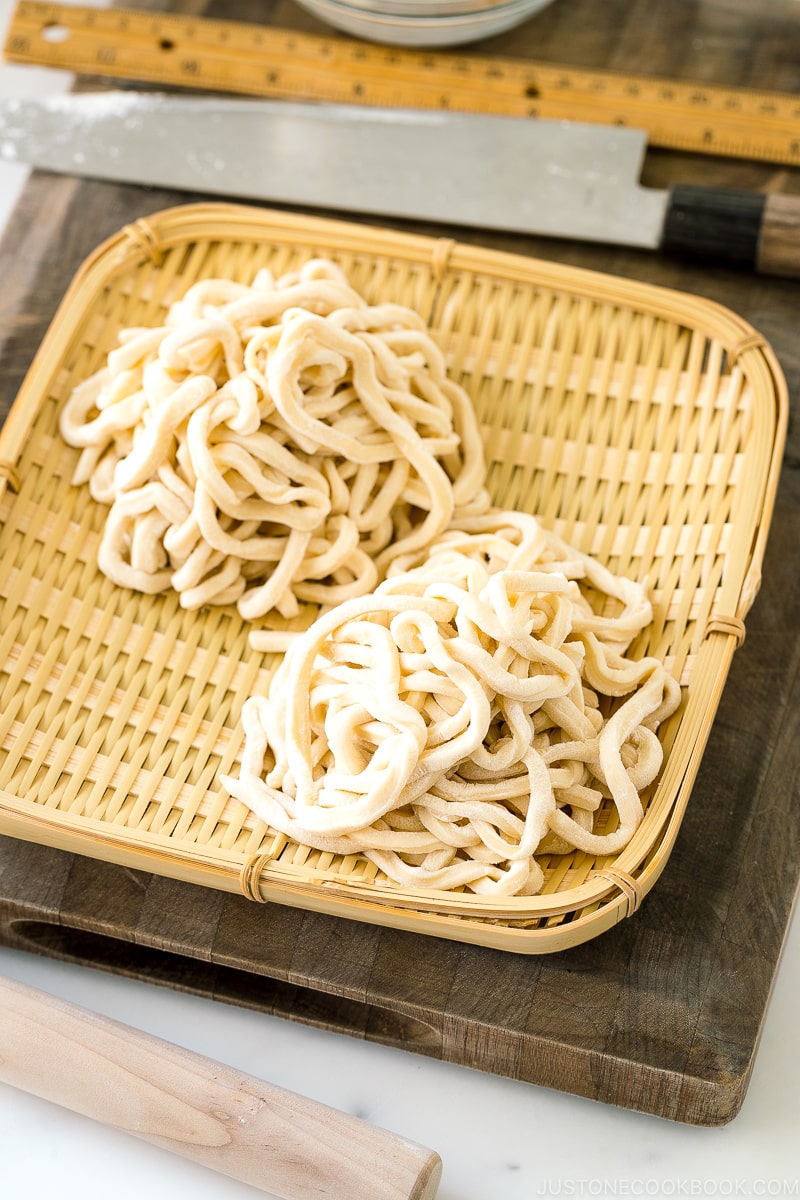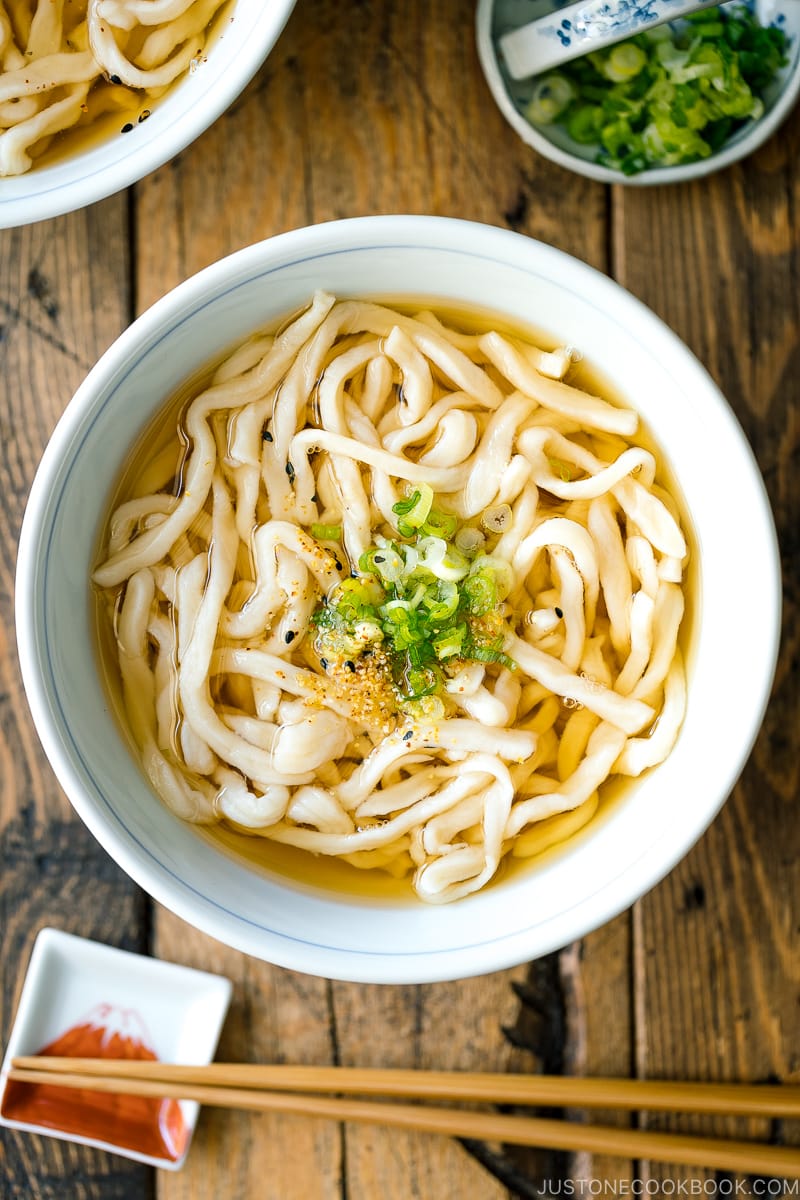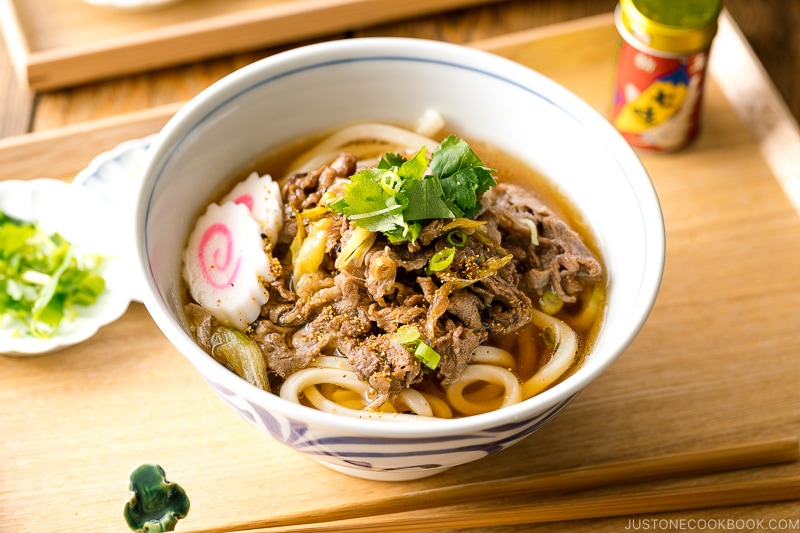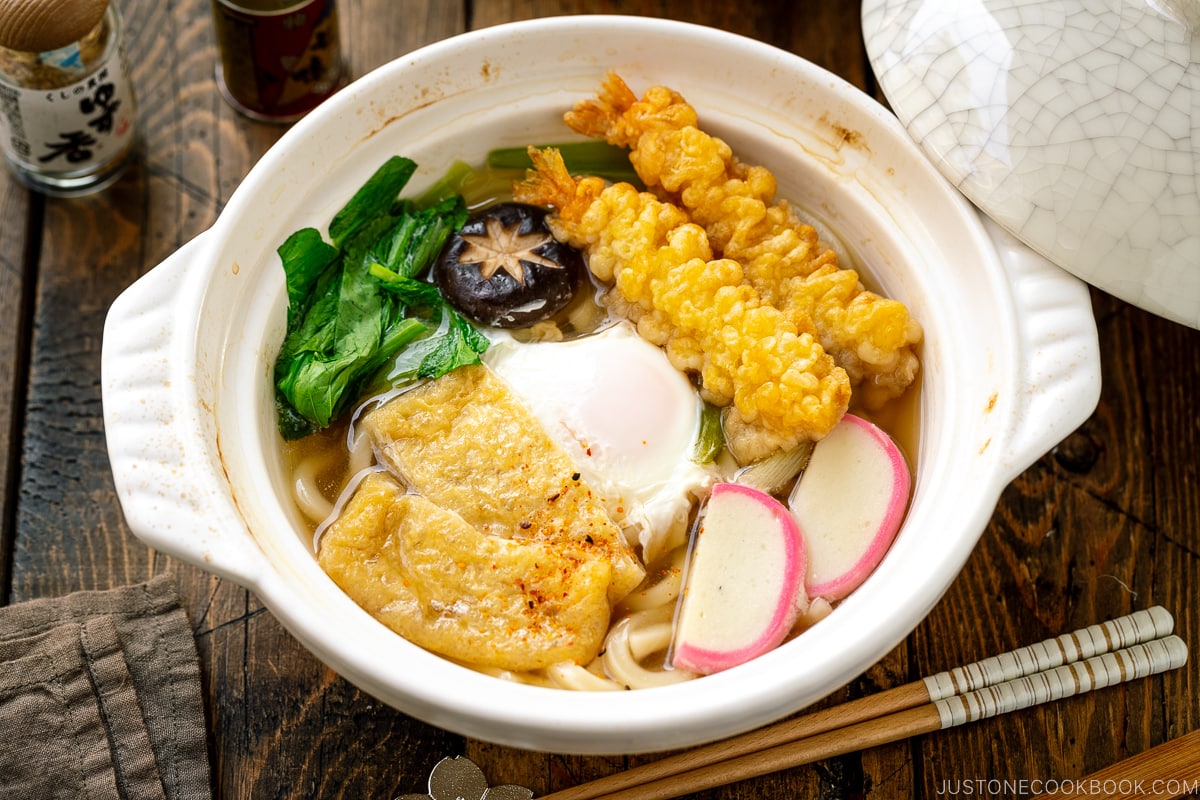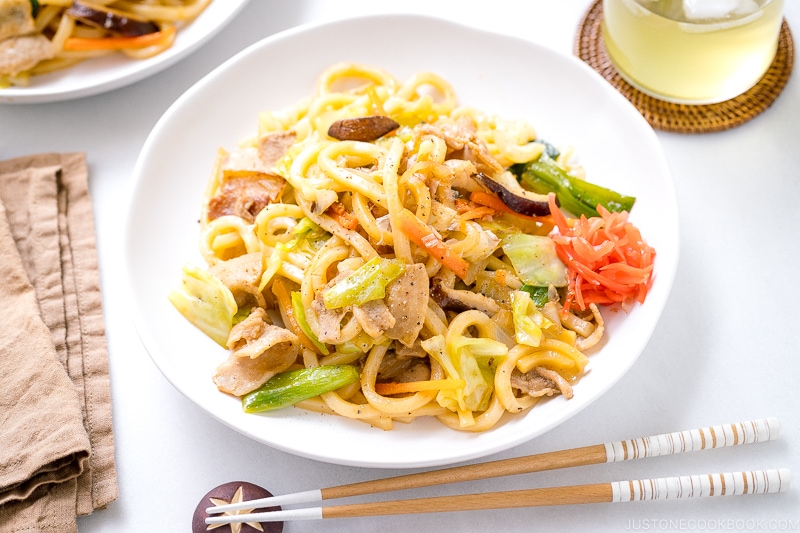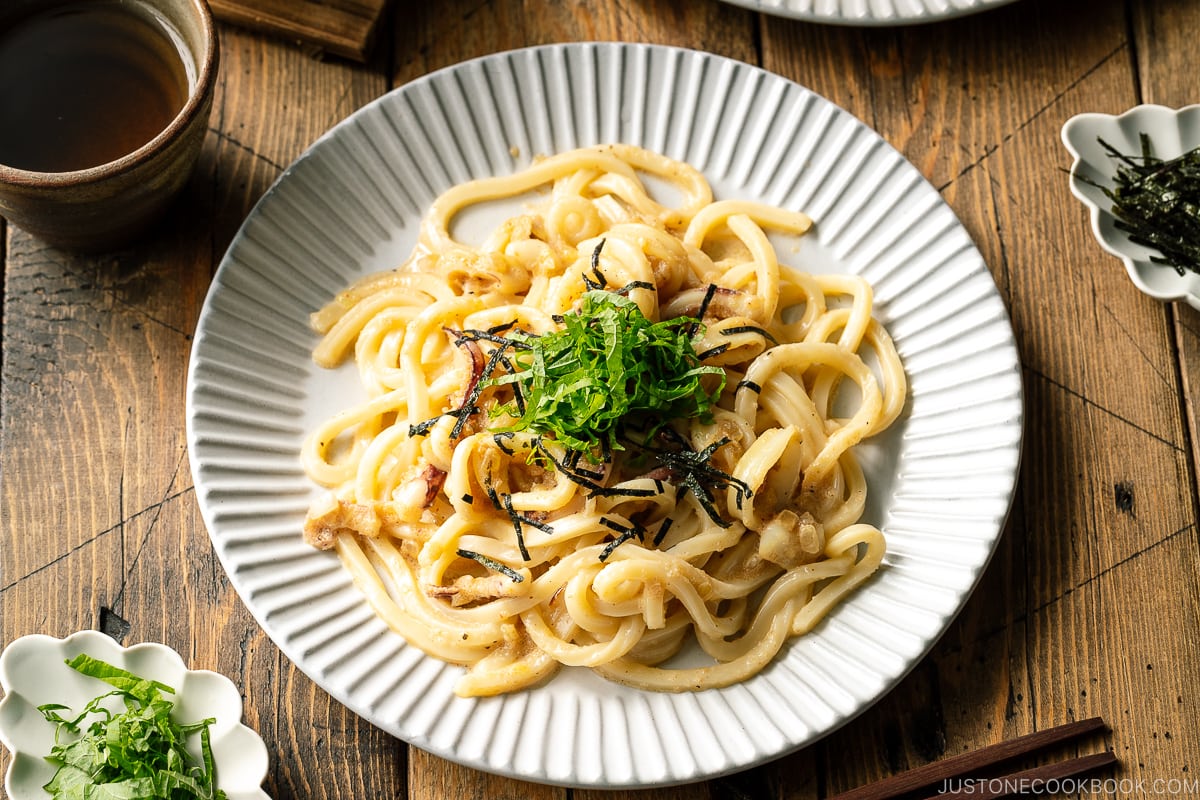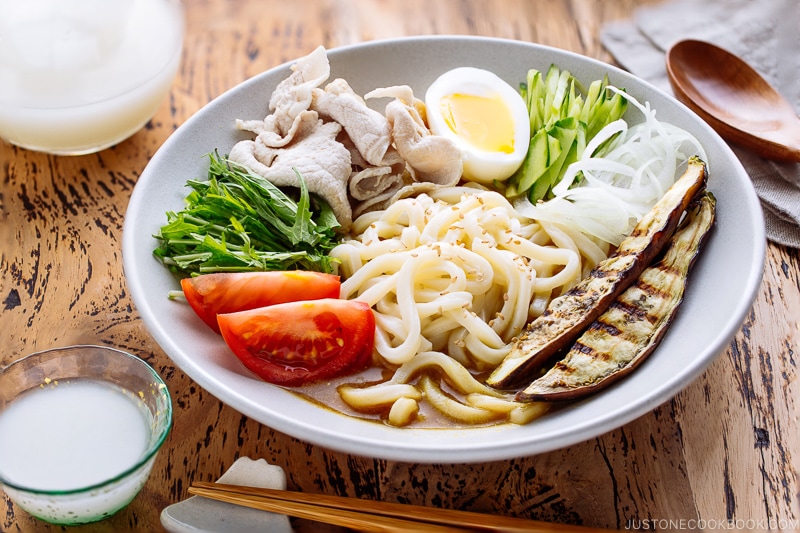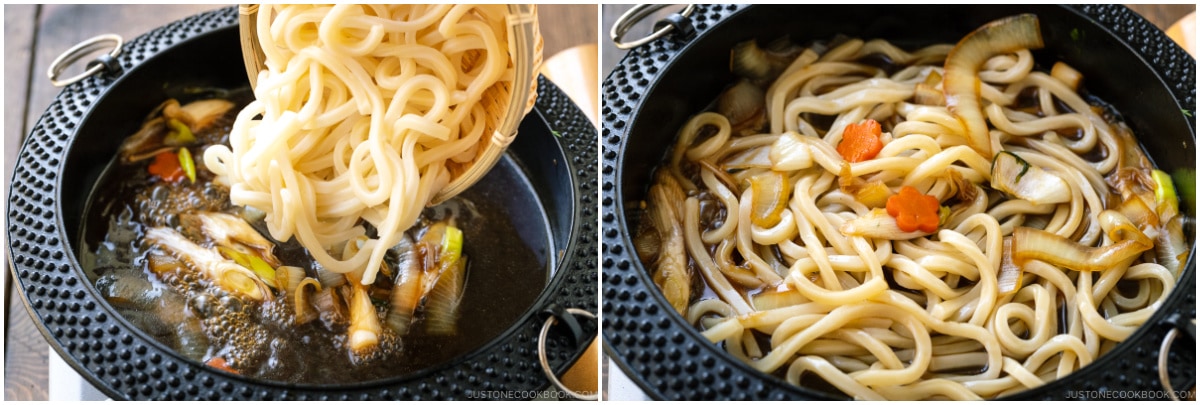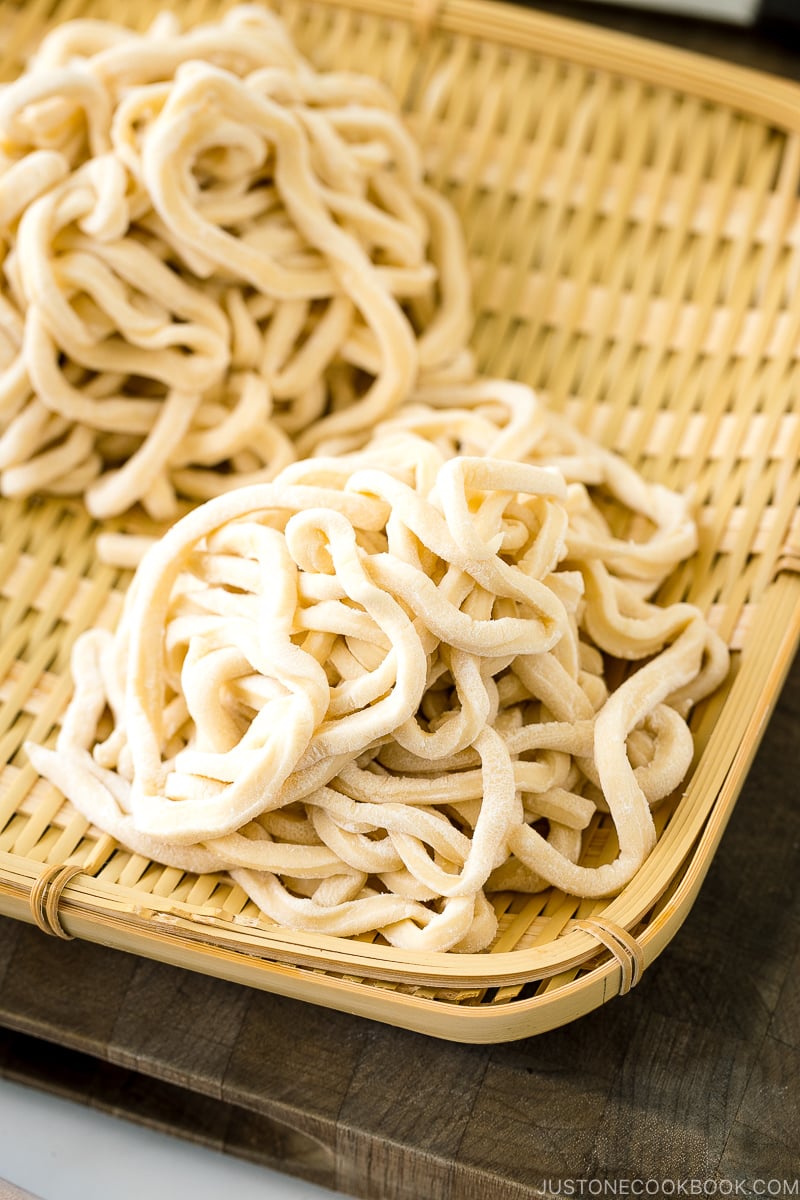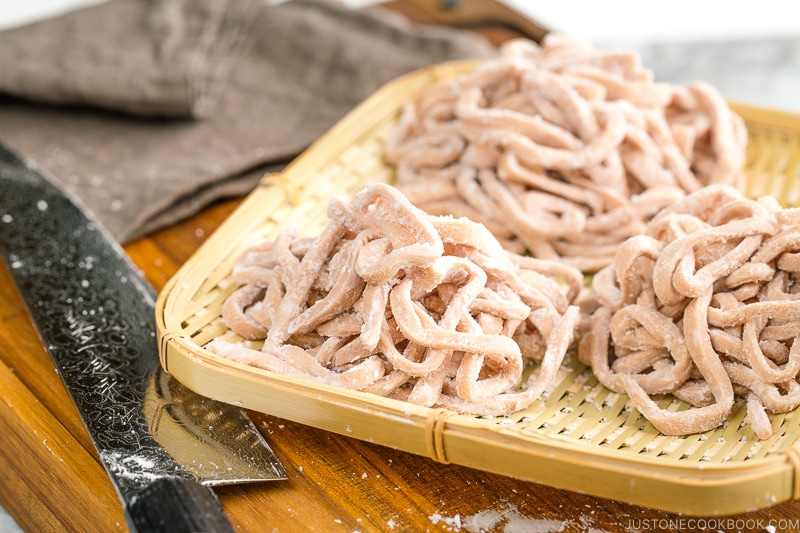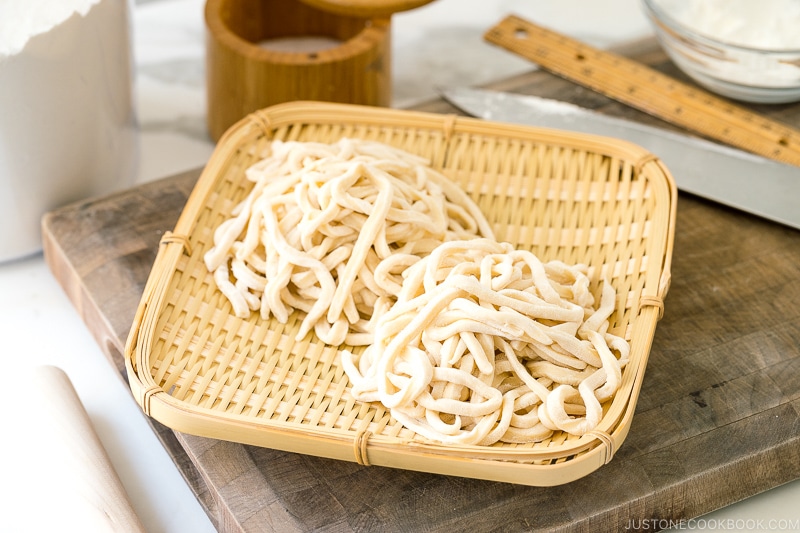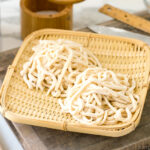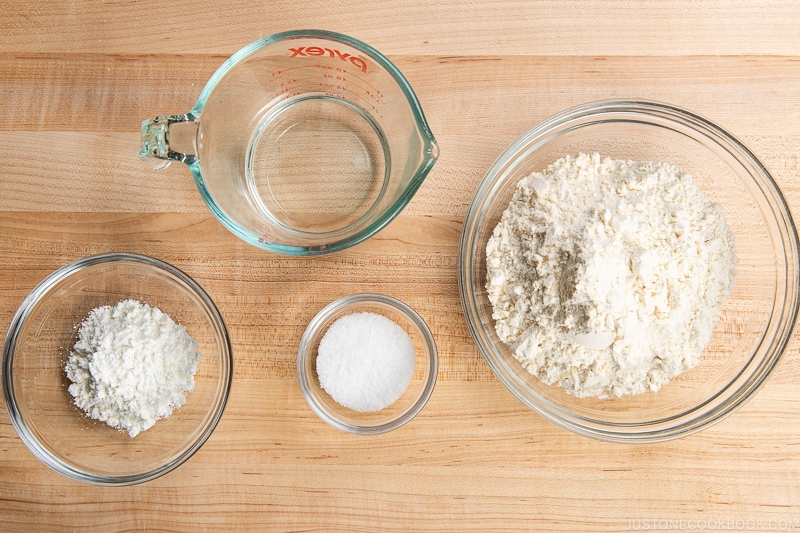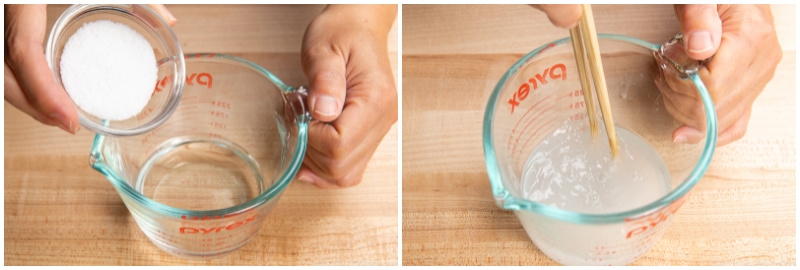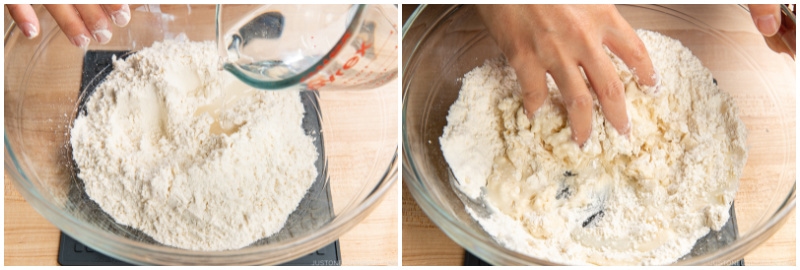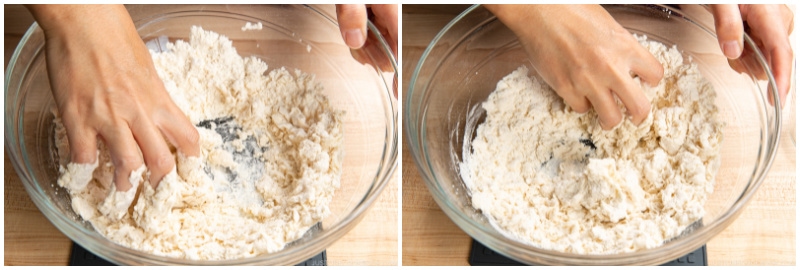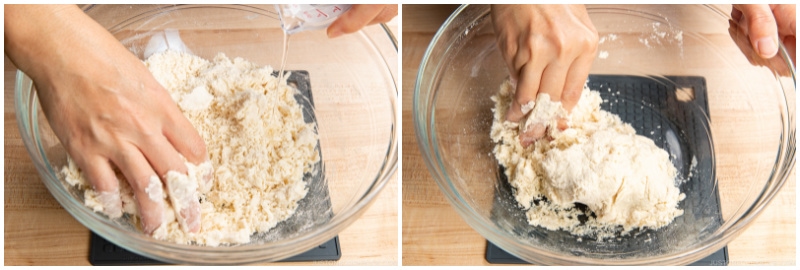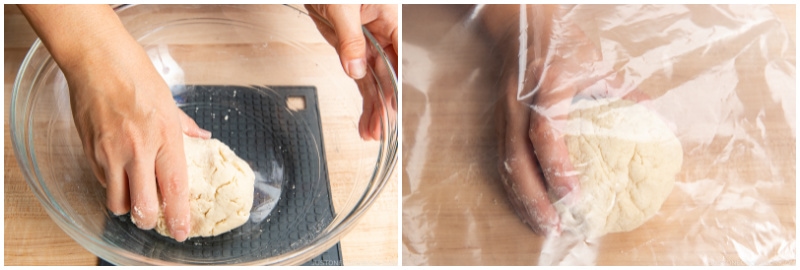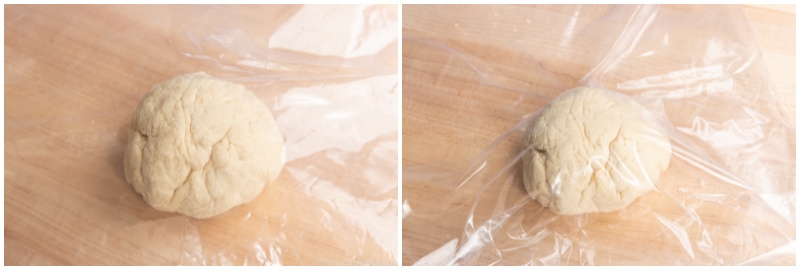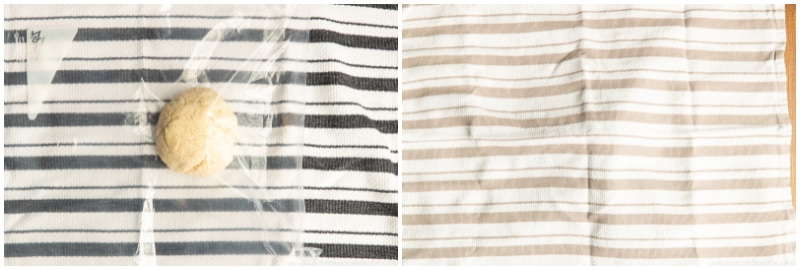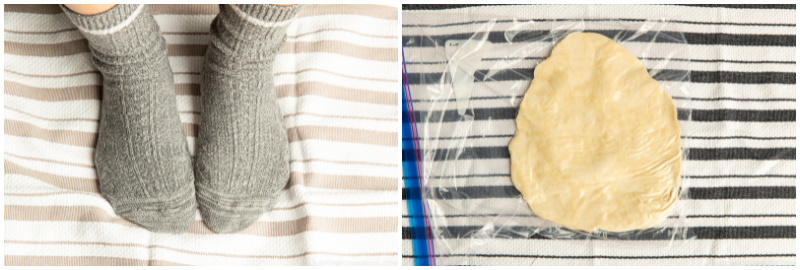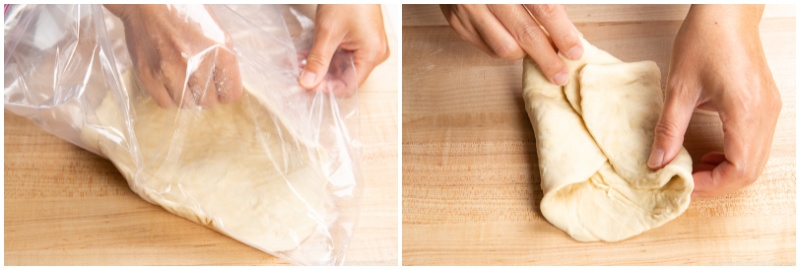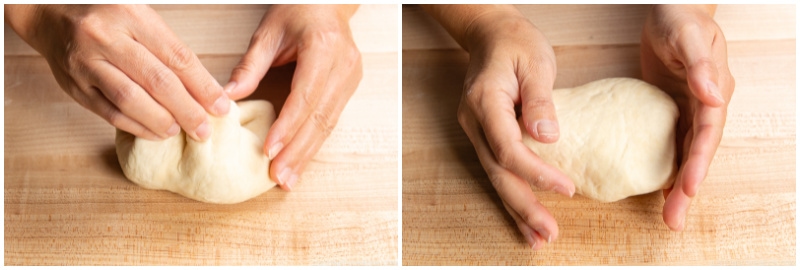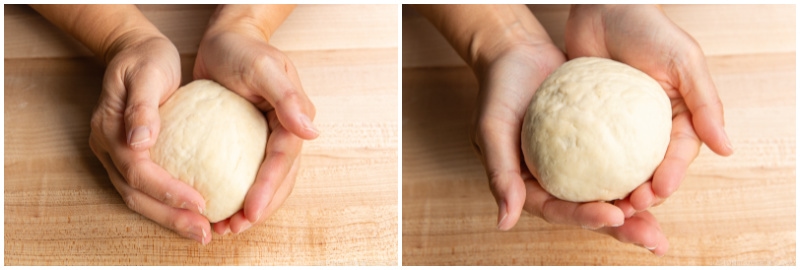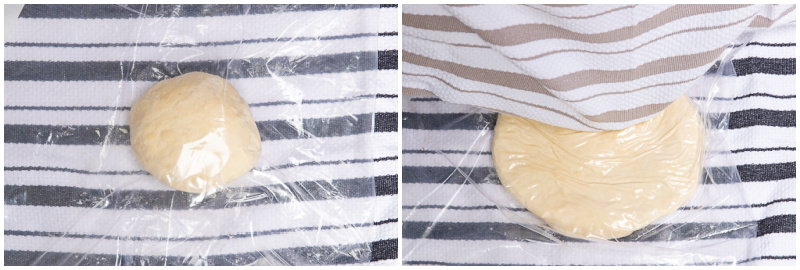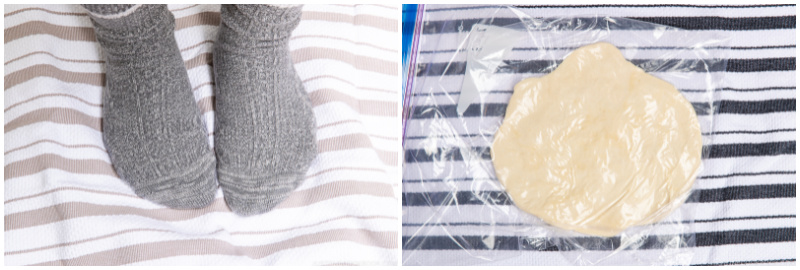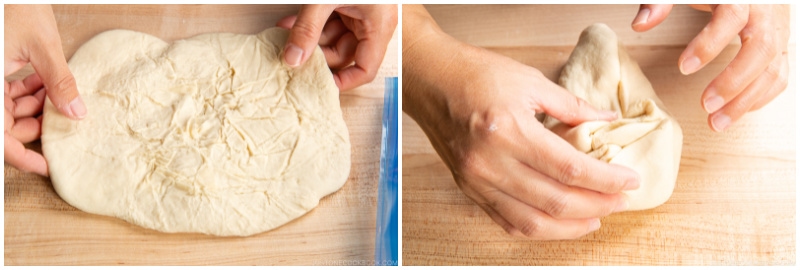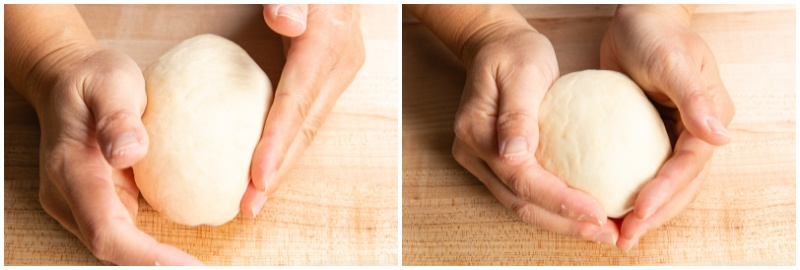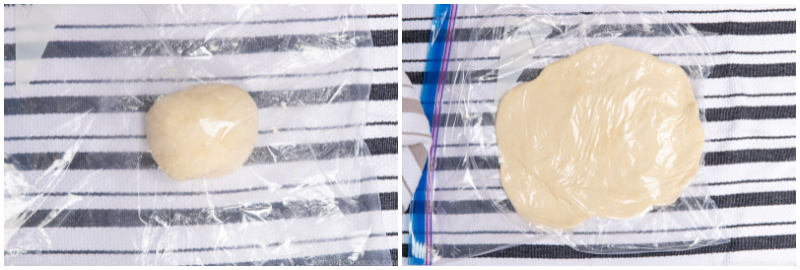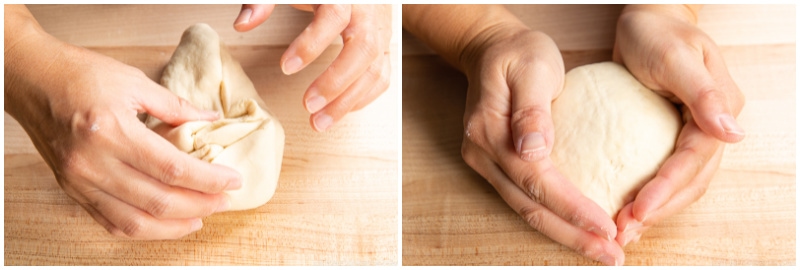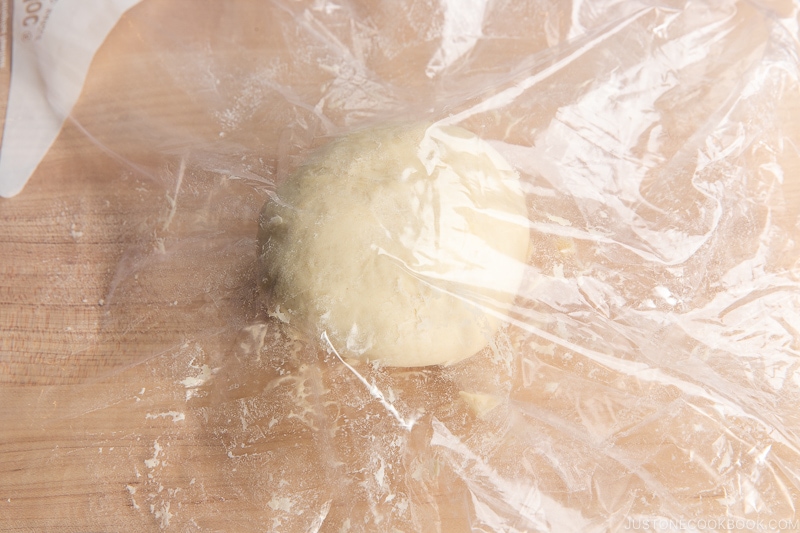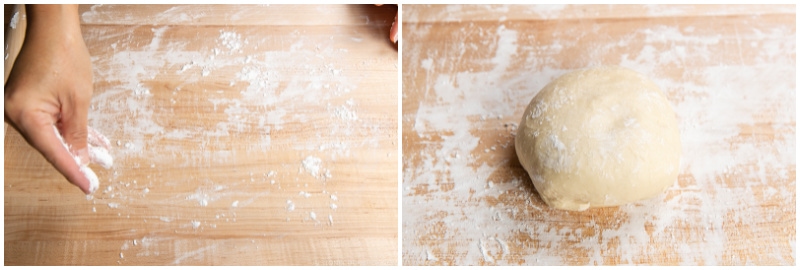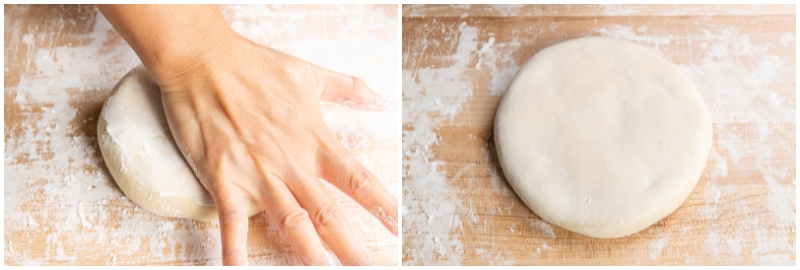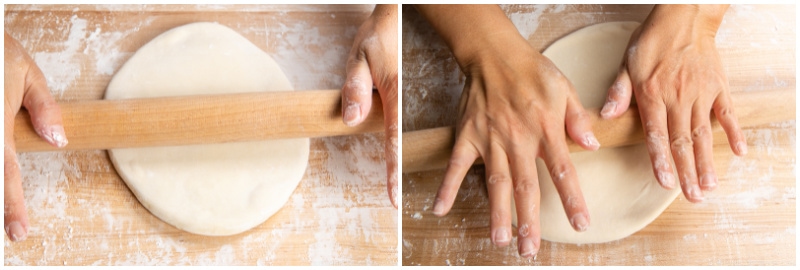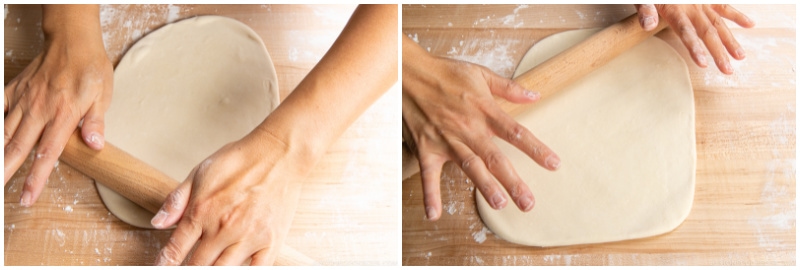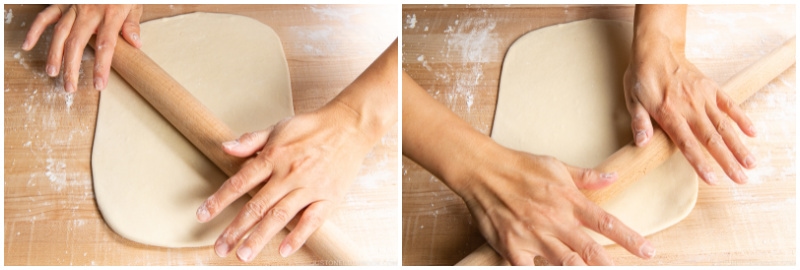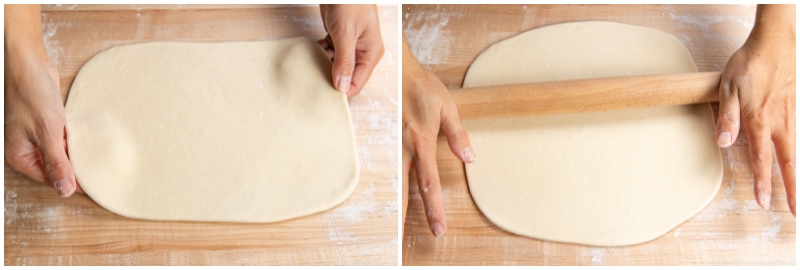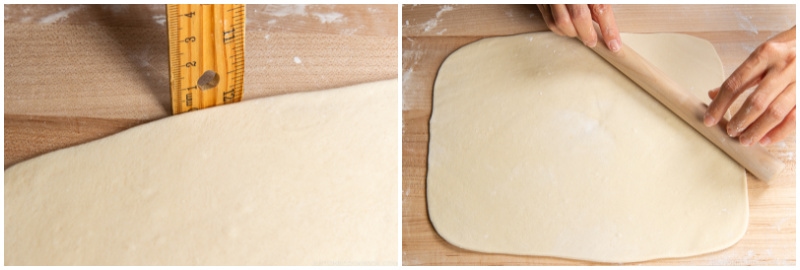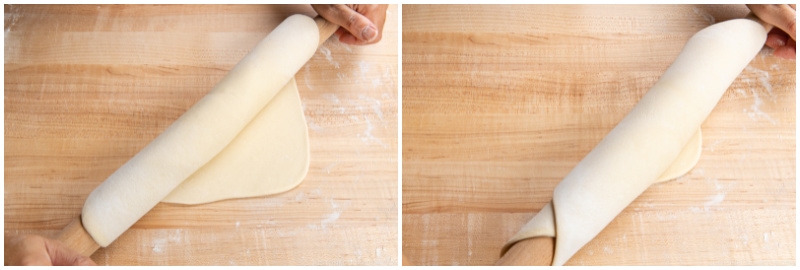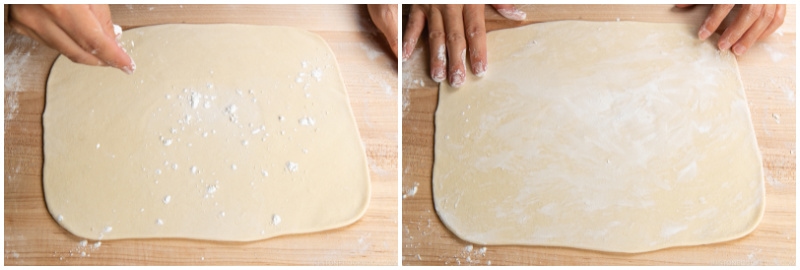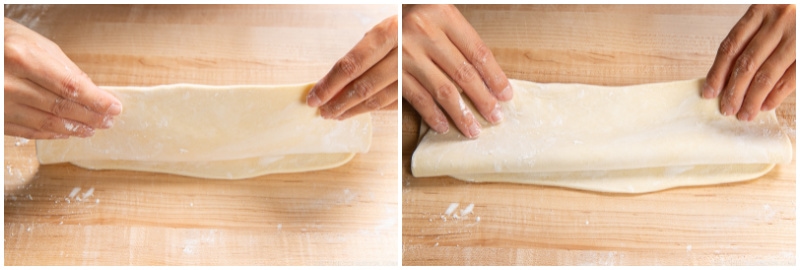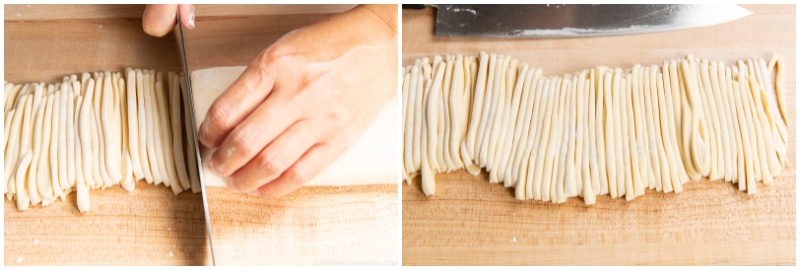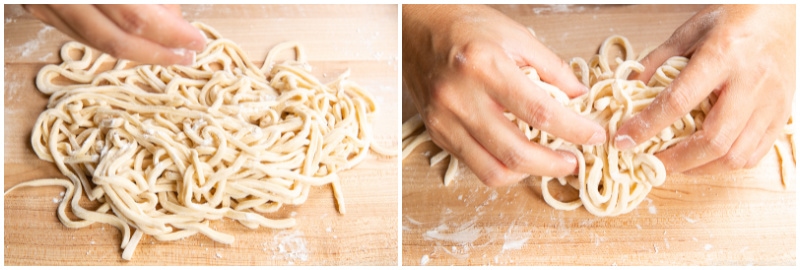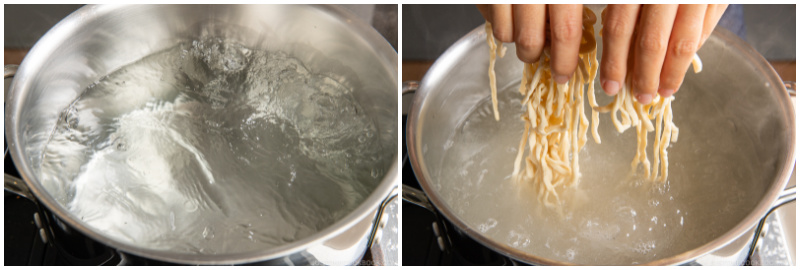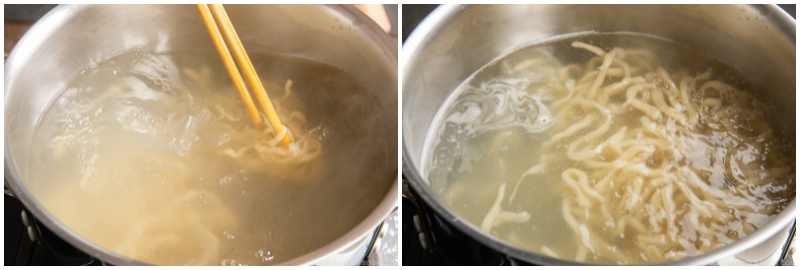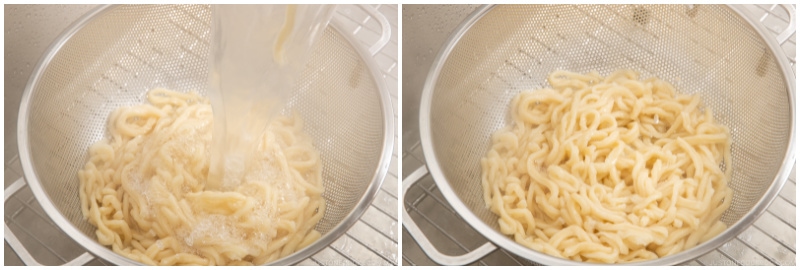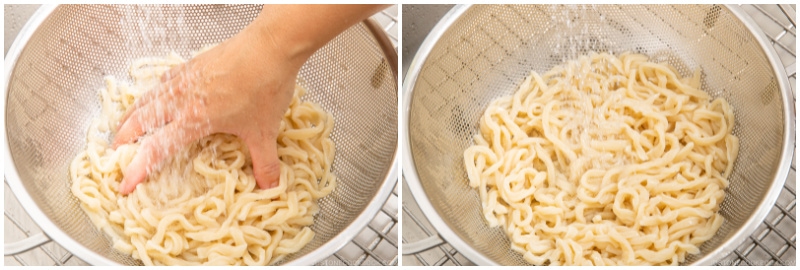One of the easiest Japanese noodles you can make at home is Udon Noodles (うどん). Thick, chewy, smooth, and utterly slurp-worthy, they are my all-time favorite. Udon holds a special place in my heart because it is humble and comforting. While I often stock up on frozen packages of udon, I take great pleasure in making these noodles from scratch. It is a fun and fulfilling cooking experiment that even a beginner will enjoy!
What Are Udon Noodles?
Udon noodles, or simply Udon (うどん) as we would say in Japan, are a wheat flour noodle commonly used in Japanese cuisines. These thick chewy noodles are loved for their springy, supple texture and neutral flavor. Udon noodles can be served in hot dashi soup broth made with kombu and katsuobushi (bonito flakes), eaten cold by dipping in a soy sauce-based sauce called tsuyu, or stir-fried with vegetables and your choice of protein, such as chicken, beef, shrimp, or tofu. Beyond the classic Japanese-style udon dishes, these noodles are also delicious with various sauces, such as curry, pesto, miso, gochujang, and more!
Why Make Homemade Udon Noodles
I’ve never made pasta or soba noodles (yet!), but I enjoy making homemade udon for these few reasons:
Fresh tasting and great texture – The texture of udon noodles sold in grocery stores is usually not of good quality. Not only do the noodles break too easily, but they can be floury and doughy. Homemade noodles are chewy with a springy toothsome bite. The freshness is simply unbeatable. Easy and requires 3 simple ingredients –The methods for making udon are very straightforward and best of all, you’ll need only flour, water, and salt. No special kitchen gadget required –Unlike making pasta noodles, which requires a pasta machine, udon noodles only call for your hands, your feet (read on to find out why), and a sharp knife!
Sounds great, right? There are two things you need to know before we begin.
It takes time – To be exact, you need at least 3.5 to 4 hours from start to finish (which includes 2.5 hours of inactive time). Just like making bread, the dough must rest to relax the gluten. It requires your feet – No, I’m not joking. Because the dough is very hard to knead with hands, the Japanese have used our feet to roll out the dough for many years!
My family devours these homemade udon noodles every time I make them. There are no preservatives and the taste and texture are much better than store-bought brands.
Ingredients for Homemade Udon Noodles
The ingredients and method for making udon noodles are very simple!
All-purpose flour or plain flour (中力粉) Salt Water Potato starch (cornstarch) for dusting
Why do we use potato starch (or cornstarch) instead of flour? The flour will be absorbed into the noodle dough; therefore, it’s best to use potato starch or cornstarch to prevent the dough from sticking to each other.
Standard Udon Noodle Recipe Measurement
So, for two and four servings, it is as simple as: – 100 g all-purpose flour – 50 g salted water (5 g salt and 45 g water) 2 servings: 200 g all-purpose flour + 100 g salted water (10 g salt + 90 g water) 4 servings: 400 g all-purpose flour + 200 g salted water (20 g of salt + 180 g water) For the best result, please use a kitchen scale. I didn’t include a “cup” measurement (I’m sorry!) as 1 cup of flour varies depending on how you measure it. The flour is compressed while you scoop, so it will not be accurate.
How to Make Fresh Udon Noodles
How to Store
You can cook the freshly made udon right away! But if you use it later, you can divide the uncooked noodles into smaller portions and freeze them for up to a month. Udon making is truly one of the rewarding and joyful rituals for any noodle lovers and home cooks. Give it a go and let me know how it turns out for you!
How to Cook Fresh Udon Noodles
Bring a big pot of water to a rolling boil. You don’t need to add salt to the water; the noodles are already seasoned and will release some salt during cooking). Loosen the noodles, leaving the excess starch behind, and add them to the pot. Cook, stirring occasionally, for 10 minutes (depending on the thickness of your noodles). Drain and rinse well under cold running water to remove the starch and give the noodles a firm texture. The noodles are now ready to use in your favorite udon recipe.
How to Best Enjoy Your Udon Noodles
You can enjoy a variety of soups, sauces, and toppings with your udon noodles to make a complete, delicious meal. For hot noodle soup, quickly heat the cooked noodles either in a pot of hot water or under hot running water. Serve in individual bowls, pour soup broth, and garnish with green onion on top. This is the classic Udon Noodle Soup (Kake Udon). Try these various hot noodle soups!
Beef Udon Nabeyaki Udon Vegetarian Udon Kitsune Udon Curry Udon 10 Minute Meal – Udon Noodle Soup
For soupless udon noodles, stir-fry noodles like Yaki Udon are perfect for a busy weeknight. Stir fry cabbage, carrot, mushrooms, and protein (beef, chicken, egg, seafood, and tofu) along with udon noodles. Don’t miss trying out Japanese-style wafu pasta such as Mentaiko Udon. I also recommend refreshing chilled noodle dishes like Cold Tanuki Udon and Cold Curry Udon. Lastly, you can enjoy the udon noodles for the finishing course of a Sukiyaki meal.
10 Important Tips to Remember
Tip #1: Use a Kitchen Scale
The kitchen scale these days is about $10, and measuring ingredients in metrics is effortless. And, zero error! If ten people use a kitchen scale to measure flour, everyone gets the same amount, and you know it’s almost impossible with a cup measurement.
Tip #2: Don’t adjust the amount of salt
There are a few reasons, but salt plays a key role in tightening the flour’s gluten and increasing the dough’s elasticity. Don’t worry, the noodles will release some salt while cooking in unsalted water and won’t be salty. Trust me!
Tip #3: Evenly distribute salted water
When adding salted water to the flour, you want to go slow and steady and distribute it evenly into all parts. This helps to achieve a consistent elasticity of the dough.
Tip #4: Try not to add more water
This is probably the MOST IMPORTANT TIP. Bear in mind that the udon dough is tough. If you can knead it with a rolling pin or hands, you probably added more water than you should. If you struggle to combine the dough mixture into a ball, add a very small amount of water, but do so carefully. If possible, avoid adding more.
Tip #5: Get a large plastic bag
I try not to use plastic bags, but it is a very helpful tool, especially when stepping on them with our feet. Get a 2-gallon bag for this recipe. No, those 1-gallon ones are way too small.
Tip #6: Do not skip “resting” time
The same approach as bread making, it’s very important to let the gluten relax before you work on the noodle dough.
Tip #7: Step on the dough from the center
When you press down the dough, start stepping from the center with your toes. Then spread the dough toward the outer edges, just like you would roll the dough with a rolling pin.
Tip #8: Knead until earlobe texture
“Knead until the dough is as soft as your earlobes” is a common expression in Japanese cookbooks and recipes. After kneading, the dough should become pliable and softer, so you can finally roll it out with a rolling pin!
Tip #9: Roll out the corners of the dough
Ideally, you want the dough rolled out perfectly rectangular or square. That way, all of your noodles will be equal in length.
Tip #10: Use a sharp knife
A sharp knife gives a clean edge to the noodles, leading to a great texture.
How to Make Pink Udon Noodles
In 2015, I collaborated with other talented YouTubers for Tastemade‘s new “Hero Series“. The star ingredient was beets, which I used as a natural dye to make pink udon noodles. If you are wondering about the taste of these pink udon noodles, you don’t really taste the beets.
Ingredients for Pink Udon Noodles
200 g (7 oz) all-purpose flour 80 ml (⅓ cup) water 10 ml (2 tsp) beet juice (see below) 10 g tsp kosher/sea salt potato starch/cornstarch (for dusting)
For Beet Juice: Peel and slice a beetroot ½” (1.3 cm) thickness. Boil it in 1 cup (240 ml) of water for 20 minutes until the beet juice is reduced to 2 tablespoons. You will only need 2 teaspoons of this liquid to color the udon. Follow the same method as the regular udon noodle recipe below or watch my tutorial video. My daughter LOVED these pink udon noodles. They are fun for special occasions, such as Valentine’s Day, Japanese Gir’s Day, or Breast Cancer Awareness Month.
Do You Like Making Food from Scratch?
Looking for another delicious made-from-scratch cooking project? These Homemade Gyoza Wrappers are a treat! Wish to learn more about Japanese cooking? Sign up for our free newsletter to receive cooking tips & recipe updates! And stay in touch with me on Facebook, Pinterest, YouTube, and Instagram. Editor’s Note: This post was originally published on February 7, 2015. The post has been updated with a new video, new images, and new content in October 2021.
